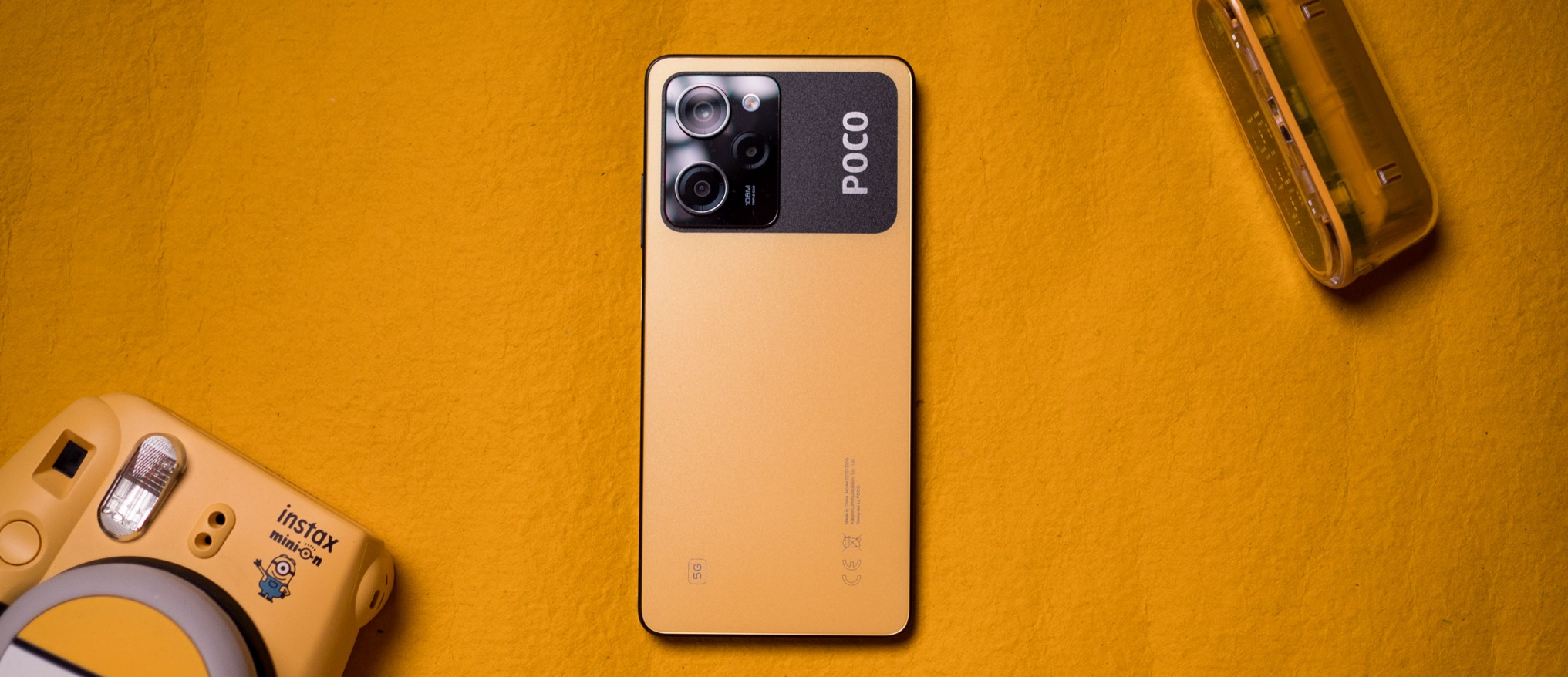Android Central Verdict
The POCO X5 Pro has a striking new design combined with reliable hardware that's great for gaming, a large battery that easily lasts over a day, and a good 120Hz AMOLED screen. While it runs MIUI 14, it is still on Android 12, and will not get the Android 13 update anytime soon. The 108MP camera at the back isn't as good as other phones that have the same sensor, but at least this time, there's 4K video. The phone is a decent recommendation in spite of the outdated software as it has a good overall value; at the end of the day, that is the X5 Pro's biggest differentiator.
Pros
- +
Good 120Hz AMOLED screen
- +
Reliable hardware for gaming
- +
Excellent battery life with 67W charging
- +
Stereo sound and 3.5mm jack
- +
IP53 ingress protection
- +
Good value for under $300
Cons
- -
Still on Android 12
- -
Won't get as many software updates as rivals
- -
Strictly average cameras
Why you can trust Android Central
POCO is slowly but surely gaining momentum in western markets, and the Xiaomi sub-brand has managed to carve out a niche for itself thanks to its budget-focused offerings. The X series in particular has been pivotal to POCO's growth in recent years, with last year's X4 Pro delivering a strong hardware package.
For 2023, POCO isn't changing things too much in this area; the X5 Pro has a lot of similarities to its predecessor, including the same 120Hz AMOLED screen, 108MP camera, 5000mAh battery, and 67W fast charging. There's slightly faster hardware, a design that looks a little more modern, and the same software frustrations — the phone runs Android 12 out of the box.
With stalwarts like the Redmi Note 12 series inching up to over $300, there's still a sizeable userbase for devices like the POCO X5 Pro, so let's see what you're getting here, and whether this is the right phone for you.
POCO X5 Pro: Pricing and availability

POCO unveiled the X5 Pro on February 6, and the phone is going up for sale starting February 7 in most markets where the brand has an official presence. That includes Europe, Latin America, and Southeast Asia. Similar to previous years, POCO is incentivizing the launch with a variety of offers in each market.
The POCO X5 Pro is debuting for €299 ($322) for the 6GB/128GB version, same as its predecessor. That's great to see given the changes to the internal hardware, and you'll find an 8GB/256GB model that's debuting at €349 ($376). If you pick up the X5 Pro at launch, you can get the 6GB/128GB model for €249 and the 8GB/256GB edition for €299.
If you don't need the 108MP camera, there's a standard version of the POCO X5 that's selling for €249 ($268), and an 8GB/256GB version for €299 ($322). Like the X5 Pro, you can get the standard X5 for less at launch; the 6GB/128GB version is €199, and the 8GB/256GB variant is €249.
India is a key market for POCO, and the X5 Pro starts off at ₹22,999 ($278) in the country.
Get the latest news from Android Central, your trusted companion in the world of Android
POCO X5 Pro: Design
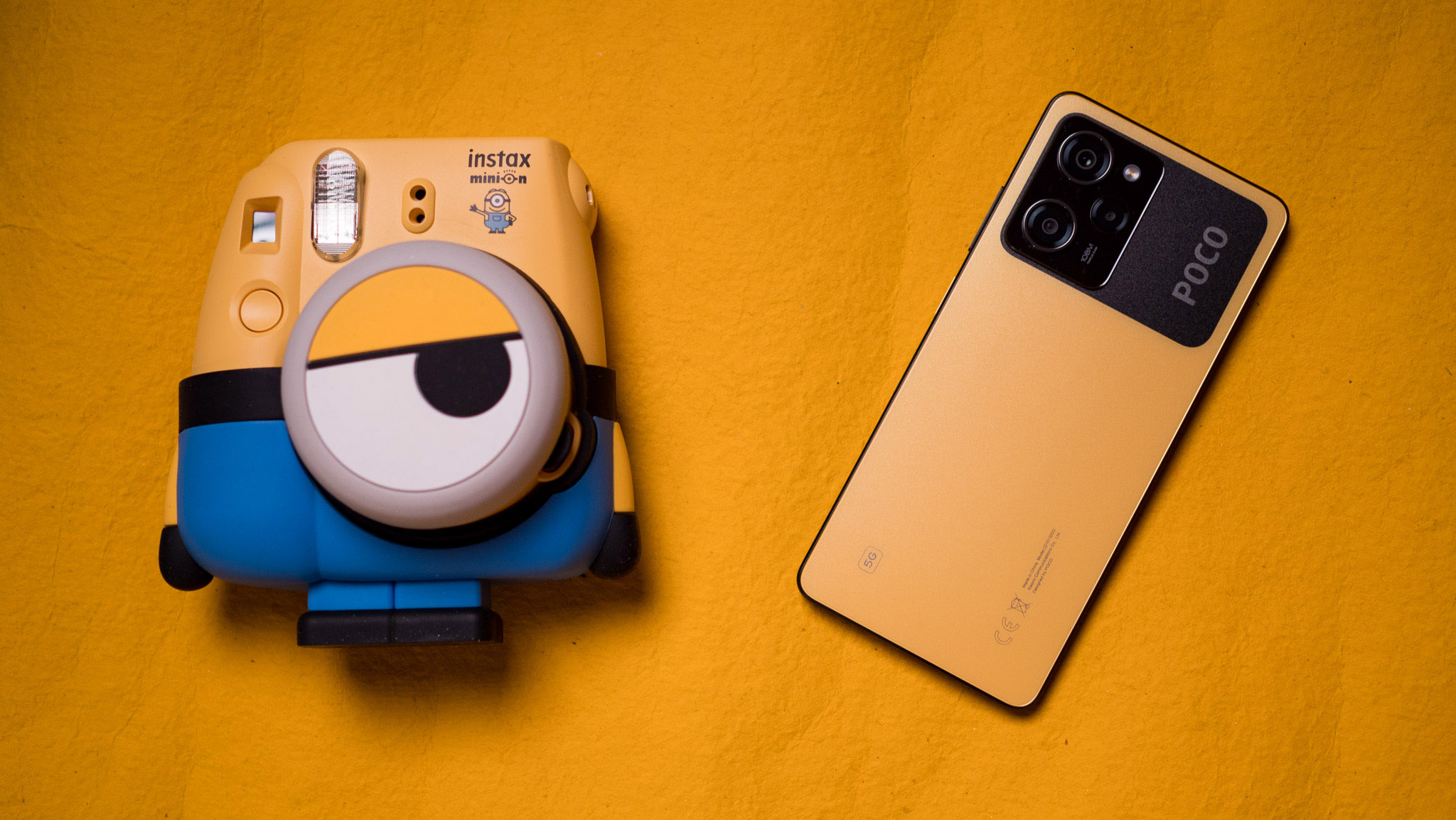
Let's kick things off with the design, because that's an area where POCO continues to do a great job. The X5 Pro uses the same design fundamentals as its predecessor, so you get flat sides and a large camera housing at the back that extends nearly all the way across the full width of the device. I don't like phones with boxy sides, but the X5 Pro has slightly beveled edges that makes it a little easier to hold and use, and the matte finish also makes a difference in usability.
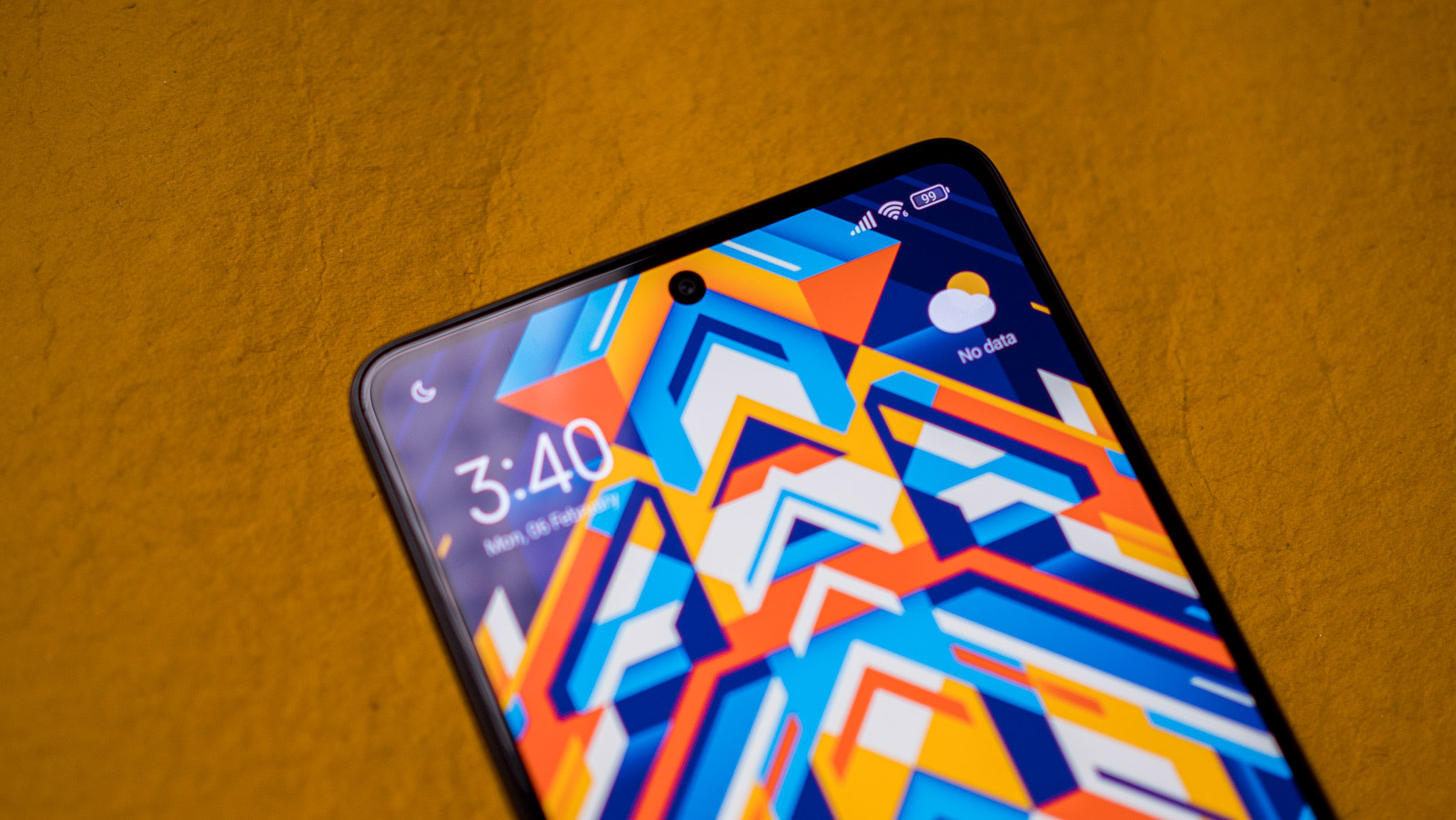
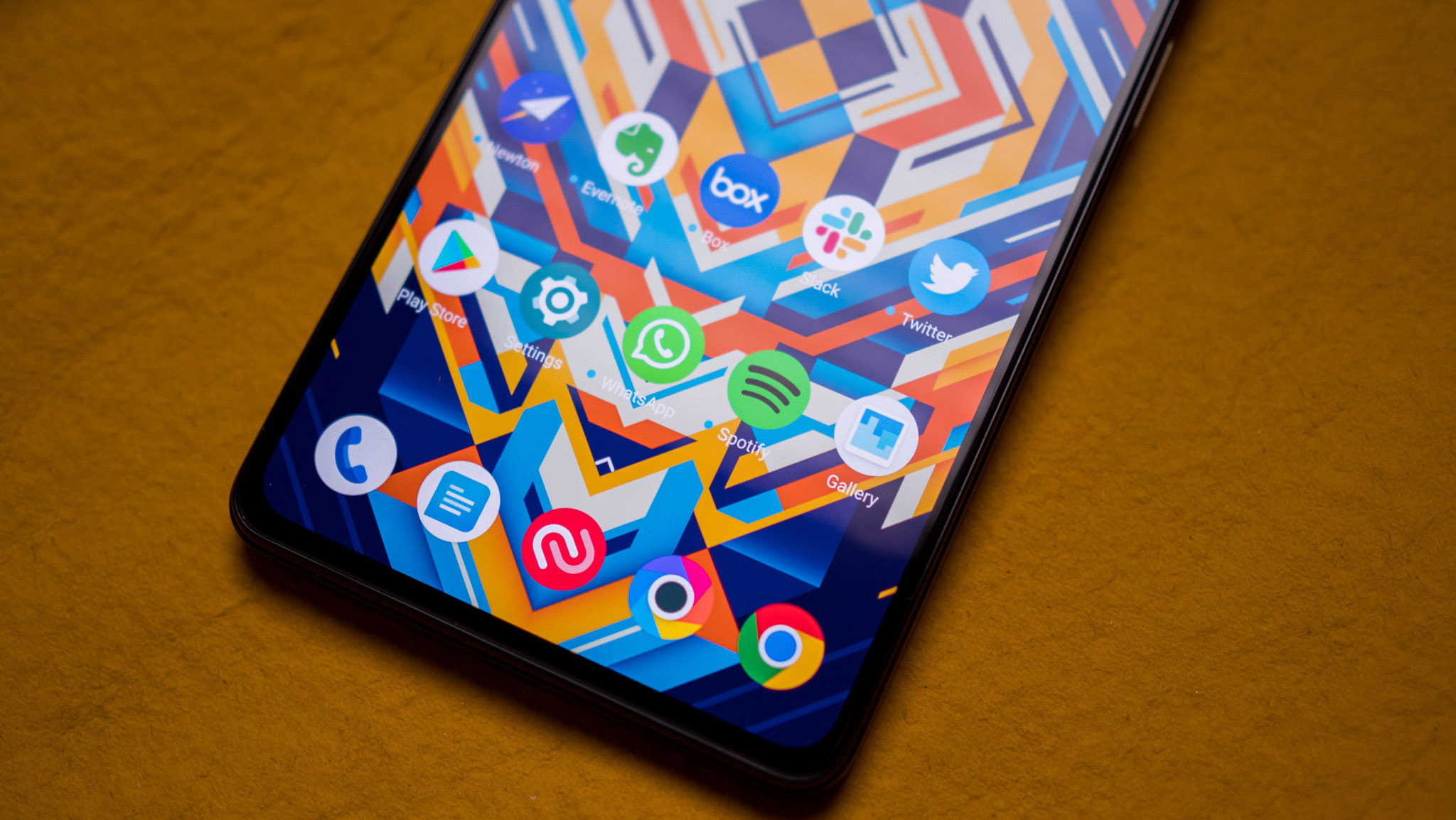

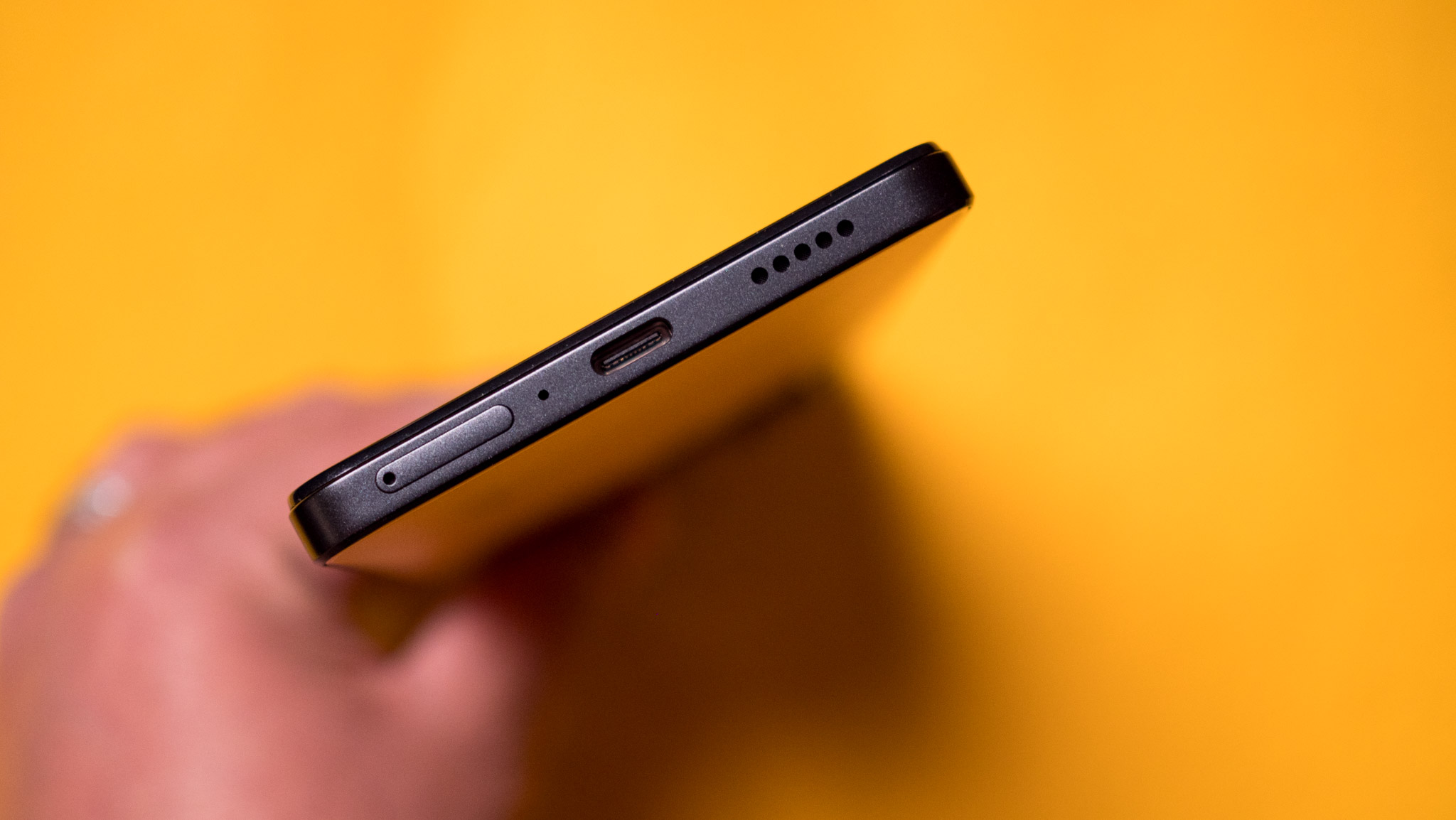
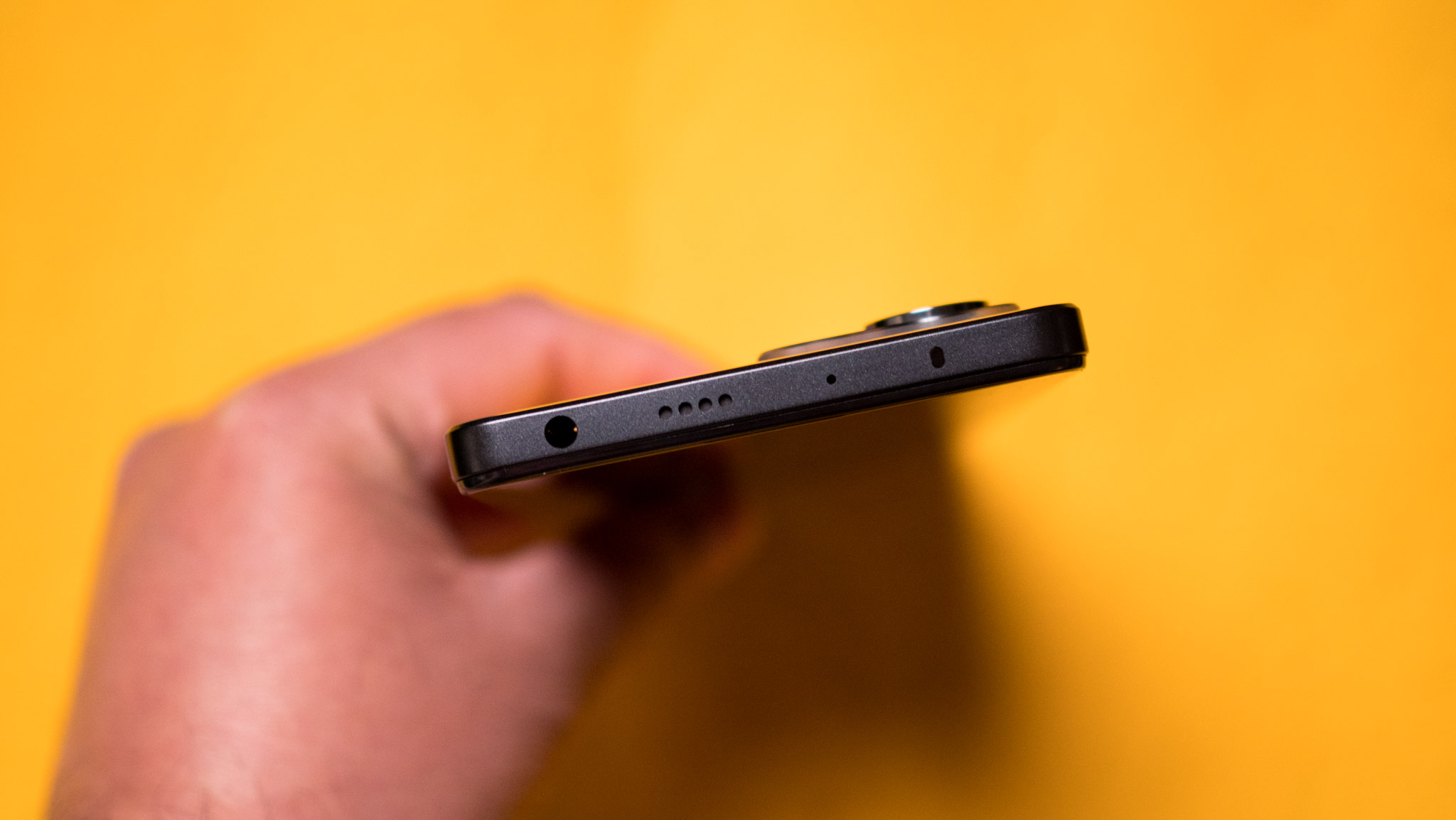


The most striking part of the design is the color; I'm using the X5 Pro in POCO Yellow, and it looks marvelous. The vibrant hue makes the X5 Pro that much more interesting, and unlike previous years, POCO went with a metallic shimmer finish that looks great. The camera island is also decked out in the same glittery finish, with the POCO logo emblazoned to the side. The contrasting color gives the phone a lot of character.
The camera island doesn't look as busy as last year, with POCO switching to a cleaner layout that sees two rings for the sensors and a smaller one for the macro module. The island doesn't protrude too much, so there isn't a lot of wobble when using the phone on a flat surface. The X5 Pro is available in black and blue variants as well, but the yellow is the way to go if you want a phone that will turn heads.
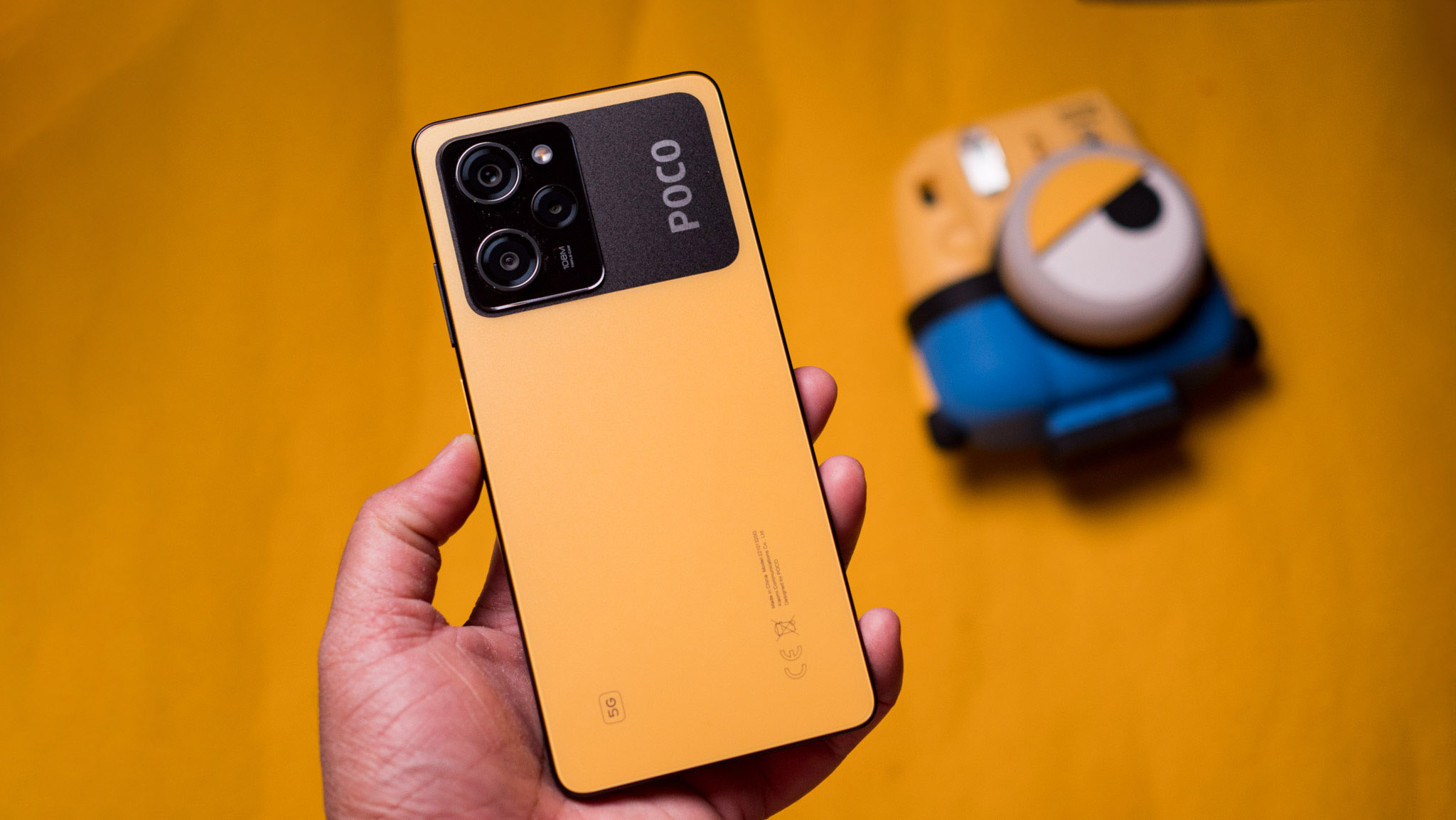
That two-tone finish extends to the sides as well this time, with the mid-frame decked out in black. I also like the fact that the power button has a yellow accent, and it adds a little bit of vibrancy to the overall design. The X5 Pro is 24g lighter than its predecessor, and a big part of the weight savings is down to the back; there's no glass back this time, with the device switching to a polycarbonate back as well as mid-frame.
I don't have any issues with this design direction as it results in a lighter device that still feels great to hold and use. Rounding out the design, you'll find a 3.5mm jack and IR blaster here, and dual-SIM connectivity. POCO is continuing to offer IP53 ingress protection, and that's great to see.
POCO X5 Pro: Screen
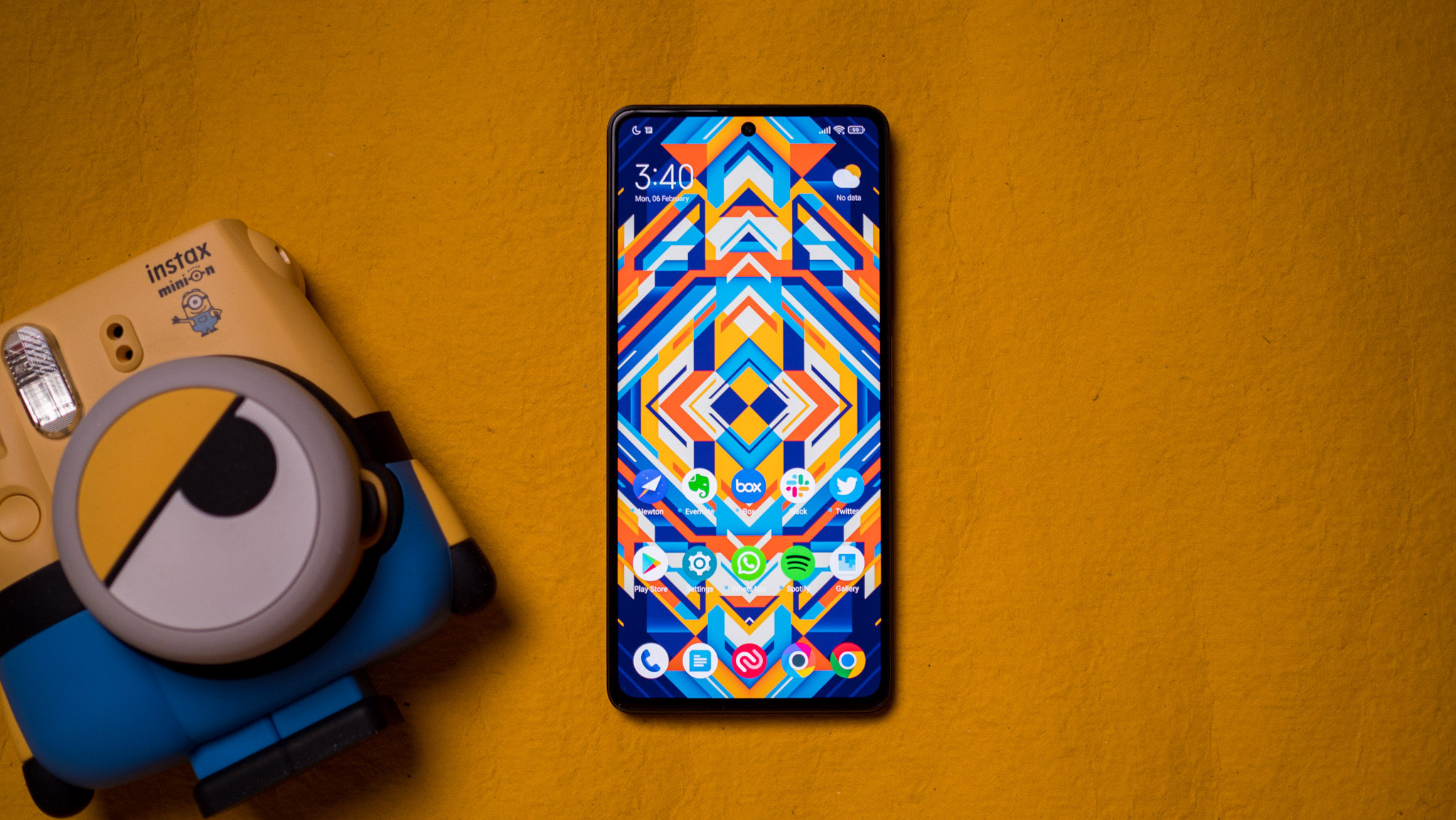
I'm not going to talk too much about the screen as the X5 Pro is using the same 6.67-inch 120Hz AMOLED panel as last year. However, the screen doesn't get quite as bright as last year, maxing out at 500 nits (the X4 Pro hit 700 nits). There's no HDR here either, but thanks to Widevine L1, you will be able to stream Full HD content in Netflix and other streaming services.
Like all POCO phones, the screen is set to 60Hz out of the box, and you'll need to go into the phone's settings to change it to 120Hz. The Redmi Note 12 Pro+ introduced dynamic refresh in the mid-range tier, but the X5 Pro is limited to 60Hz or 120Hz. That said, I didn't see any issues with the screen as such, and it had good color accuracy. The only drawback is that it doesn't get quite as bright as its predecessor, but it is serviceable even under harsh sunlight.
What makes the X5 Pro gain a slender edge is stereo sound; Xiaomi has done a magnificent job ensuring its devices have identical stereo channels, and the X5 Pro is no different. You get wonderfully detailed sound here, and that makes a difference when streaming videos or playing games on the device. And the fact that you get a 3.5mm jack with a decent built-in DAC is an added bonus.
POCO X5 Pro: Performance and battery
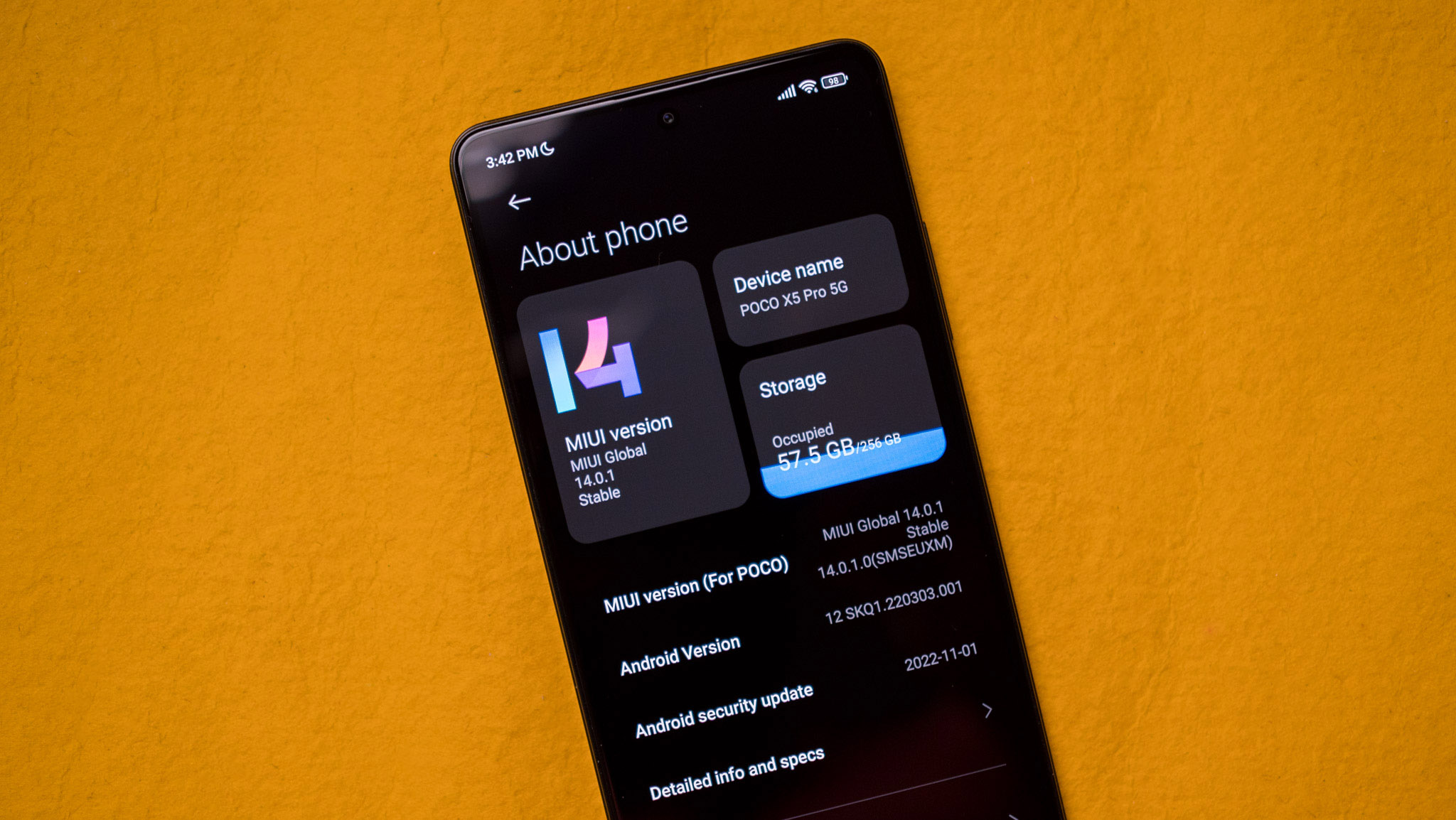
POCO understands its target userbase really well; the X series is predominantly aimed at a younger audience that likes to play games and take photos, and the hardware is tailored for these use cases. The X5 Pro is powered by the Snapdragon 778G, a stalwart in this category. I used a lot of devices featuring this chipset in the last 12 months — including the Nothing phone (1) — and it delivers good performance for daily use and occasional gaming.
| Category | POCO X5 Pro |
|---|---|
| OS | MIUI 14, Android 12 |
| Display | 6.67-inch 120Hz AMOLED, 2400 x 1080 |
| Chipset | Qualcomm Snapdragon 778G, 1 x 2.4GHz Cortex A78, 3 x 2.2GHz Cortex A78, 4 x 1.9GHz Cortex A55, Adreno 642L, 6nm |
| RAM | 6GB/8GB |
| Storage | 128GB/256GB |
| Rear camera 1 | 108MP f/1.9, 0.7um, PDAF, 4K at 30fps |
| Rear camera 2 | 8MP f/2.2, 120-degree wide-angle lens |
| Rear camera 3 | 2MP macro |
| Front | 16MP f/2.4 |
| Connectivity | Sub-6 5G, Wi-Fi 6, Bluetooth 5.2, NFC |
| Ingress Protection | IP53 |
| Security | Side-mounted sensor |
| Audio | Stereo sound, 3.5mm jack |
| Battery | 5000mAh, 67W fast charging, bundled 67W USB PD 3.0 charger |
| Dimensions | 162.9 x 76 x 7.9mm, 181g |
| Colors | Yellow, Black. Blue |
The X5 Pro isn't a gaming phone by any measure, but it is good for playing visually-intensive titles at medium settings, and doesn't throttle under load. I didn't see any issues or slowdowns in daily use, and on the whole, it is a reliable platform for most users. POCO's F series devices like the F4 GT are a better fit for those interested in a gaming phone, but for day-to-day tasks, the X5 Pro has a lot to offer.
For starters, it is faster than the outgoing X4 Pro at gaming, and that should be welcome news for those looking to upgrade from an older phone. Other than that, the base variant with 6GB of RAM and 128GB of storage is a good bargain value, but I'd suggest going with the 8GB/128GB configuration to give the phone a little more headroom.

The phone has 5G connectivity as well with the requisite bands for each region it will be sold in, and while I finally have 5G available in my area, I wasn't able to test it as I'm using the global version and not the Indian model.
A key difference on the connectivity side is that the X5 Pro now includes a Wi-Fi 6 modem, made possible by the new silicon. You also get Bluetooth 5.2 here, and like previous years, NFC availability is limited to select western markets, with customers in India missing out on the feature.
The in-screen reader is fast to authenticate, and I didn't see any issues in this area. The button itself is a bit on the mushy side, but seeing as how it is an always-on sensor, you'll just need to rest your finger on the button to unlock the phone.
Battery life is an area where POCO continues to do very well, with the X5 Pro lasting well over a day even with heavy use. There's no battery anxiety whatsoever, and when you need to charge the device, the 67W fast charging standard ensures the battery is full in under 50 minutes. There's also a bundled charger in the box, and the best part is that it doubles as a USB PD 3.0 charger.
POCO X5 Pro: Cameras
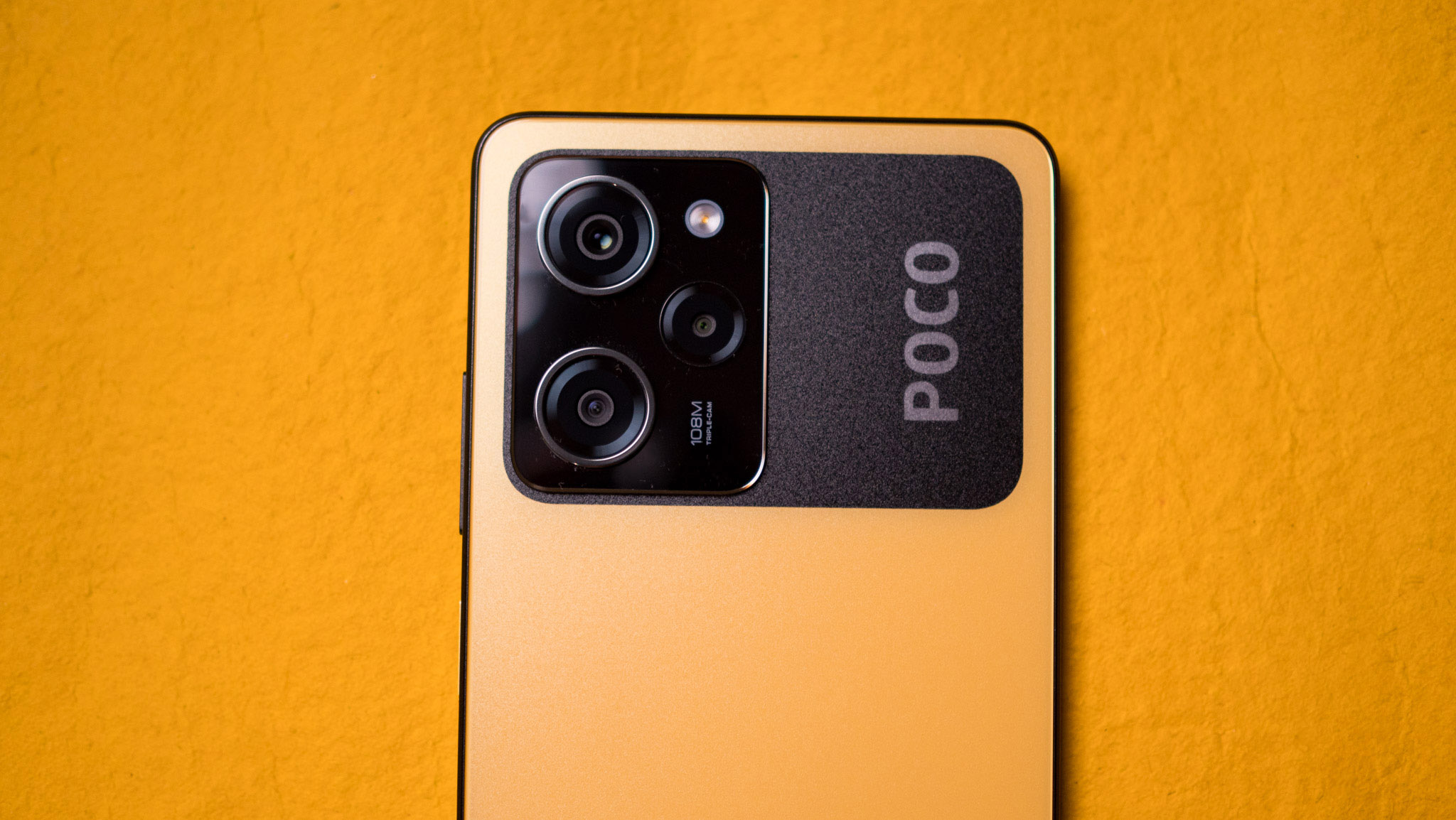
POCO isn't reinventing the wheel when it comes to the cameras, with the X5 Pro featuring the same slate of sensors as last year. You get the same 108MP Samsung HM2 module that was a mainstay on most Xiaomi and POCO phones last year, including the X4 Pro and the Redmi Note 11 Pro. Joining the 108MP camera is an 8MP wide-angle lens and 2MP macro module, and a 16MP lens at the front.
The biggest difference over last year is that the X5 Pro can now shoot 4K videos. This was a big limitation on the X4 Pro, and it's good to see POCO rectifying the issue this time around. Other than that, you're getting the same set of features here, and the camera interface is unchanged. You'll find all the shooting modes laid out on a ribbon at the bottom, along with toggles for the lenses, HDR, AI scene detection, flash, Google Lens, and settings.







The X5 Pro does really well in daylight situations, producing shots with good dynamic range and color accuracy. There is some noise around the edges, but it isn't noticeable most of the time. The tuning is similar to last year, and the phone doesn't try to oversaturate images.
The main 108MP camera takes decent enough shots in low-light situations as well, but you get visible noise. The Night mode does a much better job in these situations, and unlike last year, it is available on the wide-angle lens as well.
On that note, the 8MP wide-angle module is average at best, and it doesn't quite deliver the same color balance as the main camera in most scenarios. It is still serviceable for sharing photos on social media, but it isn't great by any measure.
That sums up POCO's imaging efforts pretty well; the X5 Pro does a good job considering what it costs, but this isn't the phone to buy if your main use case is taking photos.
POCO X5 Pro: Software
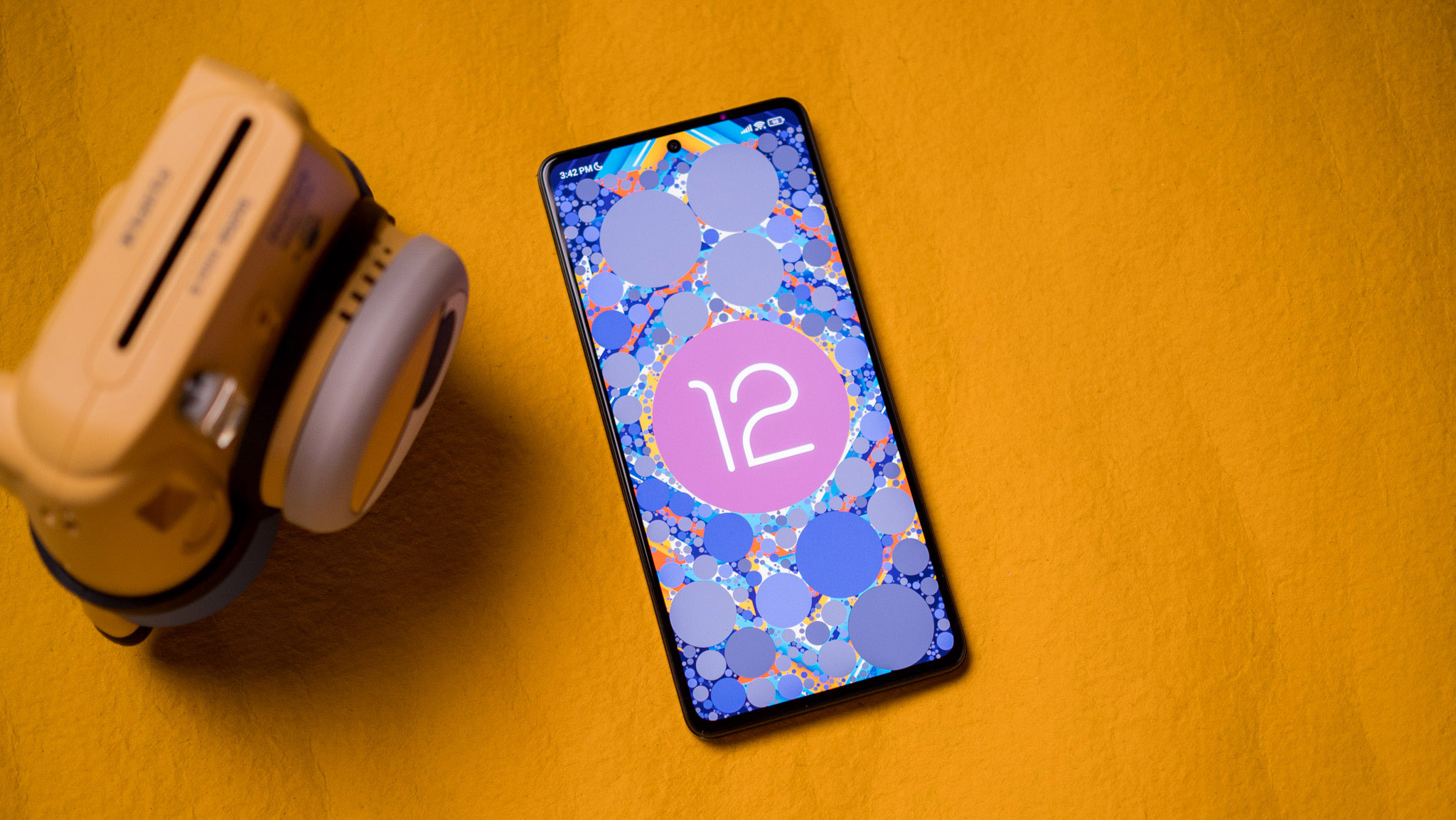
My biggest issue with POCO and Xiaomi phones in general is software. The Chinese manufacturer hasn't paid much attention to this key area in the last 24 months, and at a time when the rest of the field is rolling out more updates and introducing devices with the latest version of Android, Xiaomi is on the backfoot.
The X5 Pro runs MIUI 14.0.1 for POCO out of the box, and while that is the latest verison of MIUI, it is based on Android 12. POCO did the same thing last year as well, and looking at how long it took the X4 Pro to get the Android 12 update, the X5 Pro will not see Android 13 until we're well into Q2. Xiaomi's blatant refusal to launch phones with the latest version of Android doesn't make sense to me, and having seen the same strategy play out with the Redmi Note 12 series, I can only assume that the brand doesn't care about offering the latest version of Android on its devices.
The X5 Pro still runs Android 12 out of the box, and it isn't going to make the switch to Android 13 anytime soon.
While the issue around the underlying Android version is annoying, the X5 Pro benefits from the tweaks Xiaomi made to MIUI 14. The interface feels more fluid in daily use, there's less bloatware out of the box, and the settings page is organized a bit better, with nav gestures now housed within the Home screen menu.
Control Center is enabled by default, and this switches the notification shade to a split layout with toggles on one side and incoming notifications on the other. I'm not a fan of this design, and thankfully, you can go back to the unified notification shade via the settings. MIUI mainstays like vertically scrolling overview menu, app drawer with automatically-sorted categories, and the ability to change icon size are intact here.
There is a decent amount of customizability, but Xiaomi needs to do a bit more around the software to give it a visual refresh. For now though, there isn't a whole lot wrong on the software front, and the best part is that you won't see any errant ads or notifications.
The X5 Pro would have been the ideal contender against the Galaxy A series, but the lackluster software update situation — with the phone getting half the number of platform updates as Samsung's devices — makes it a nonstarter for western markets. The Galaxy A53 that was launched in February 2022 will get to Android 16, with the 2023 X5 Pro not going beyond the Android 14 update.
POCO X5 Pro: The competition
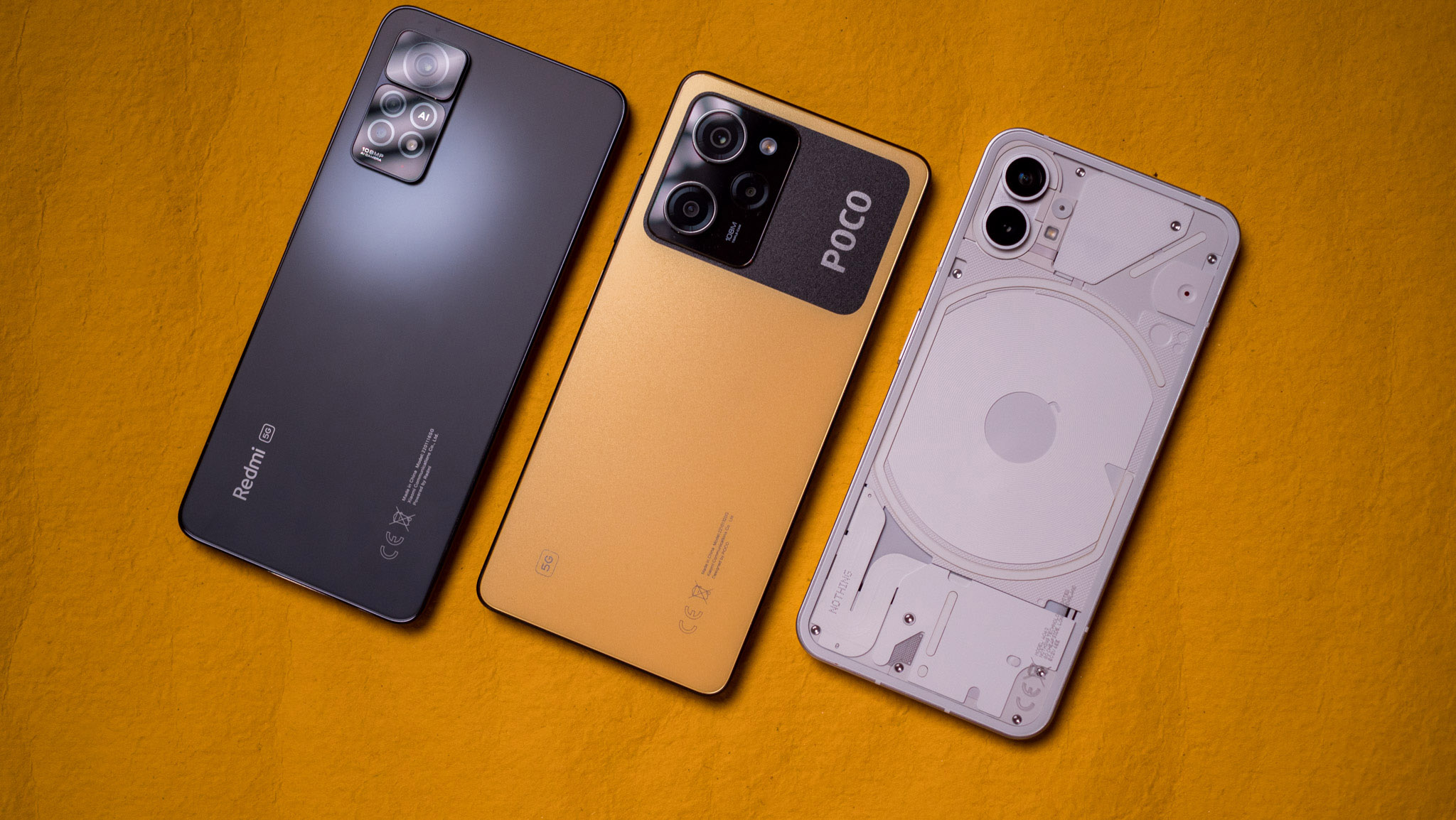
If you want a good budget phone for 2023, the POCO X4 Pro continues to be a reliable overall choice. It isn't too different to the X5 Pro; both phones share the same cameras, battery, and screen. And while it hasn't made the switch to Android 13 either, the fact that it's been on sale for over a year means you can get it for a relative bargain.
The Redmi Note 12 Pro is a good alternative as well, and while it has the same annoying software issues as the X5 Pro in that it is running Android 12 out of the box, it has a good camera and the same large 5000mAh battery with 67W charging.
If you want something that stands out a bit, the phone (1) is a solid option to consider. The phone is costlier than the X5 Pro while featuring the same hardware, and while it doesn't have Android 13 yet, the software is clean and uncluttered, and the unique design makes it stand out.
POCO X5 Pro: Should you buy it?

You should buy this if:
- You want a budget phone with a 120Hz AMOLED screen
- You need reliable hardware that holds up for gaming
- You want a phone with standout battery life
- You're looking to get the best value in the budget category
You shouldn't buy this if:
- You want the latest version of Android
- You need fast software updates
- You need a phone that takes standout photos
The X5 Pro is POCO's best budget phone yet, and it ticks a lot of the right boxes. The hardware is reliable for daily use and holds up well in gaming, the screen is vibrant and goes up to 120Hz, and the battery easily lasts over a day with ease. The X4 Pro was serviceable for taking photos, but the fact that it missed out on 4K video made it an ultimately poor choice. Thankfully, the X5 Pro fixes that particular issue.
POCO is lagging behind its Chinese rivals and Samsung when it comes to software updates, and it is unlikely that the brand will many any significant changes to its update policy in 2023 — it just doesn't look like a priority right now. So if you're keen on using the latest version of Android and want timely software updates, you should wait and see what Samsung does with the Galaxy A series this year.
That said, if you want a budget phone with good hardware, large battery life, decent camera, and the best value for under $300, the X5 Pro is a great option that undercuts its immediate rivals.

Harish Jonnalagadda is Android Central's Senior Editor overseeing mobile coverage. In his current role, he leads the site's coverage of Chinese phone brands, networking products, and AV gear. He has been testing phones for over a decade, and has extensive experience in mobile hardware and the global semiconductor industry. Contact him on Twitter at @chunkynerd.
